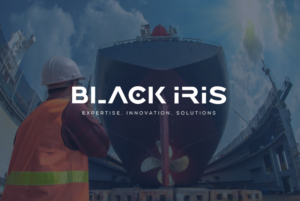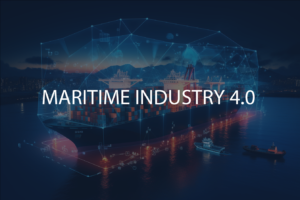The maritime industry is constantly in flux, rapidly evolving on a vast scale. To stay in the game, one must adapt to this array of changes and employ the cards that ensure the best chances of winning. Performance analytics are of paramount importance, for ensuring the maintenance of optimal levels of energy efficiency, for a vessel already in its operational stage.
In this article, we shall look into the 5 key refinements with fuelling factors.
Refinement 1: Hull Cleaning Simplified
Multiple studies, and analyses globally over the past decade have concluded that hull cleaning has a significant negative impact on the fuel consumption of a vessel (although dry-docking often leads to a more lasting effect than underwater cleaning). The principle behind this is simple: Biofouling is one of the biggest contributors to the reduction in vessel speed and increased fuel consumption.
Fuelling Factor 1 – the firm that invests in a high-accuracy data acquisition system onboard
its vessel shall reap the benefits of timely hull cleaning based on its current condition.
Refinement 2: Energy Saving Devices-understood
An accurate indication of a vessel and its propulsion system’s geometry can ensure the effectiveness of the various CFD calculations that are run when selecting a tailor-made ESD for an existing vessel. Usually, the most commonly used ESDs for merchant vessels are pre-swirl stators, and Mewis ducts that make use of the propeller’s geometry to optimize the flow pattern and angle of attack. To do this the iterative numerical simulations can accurately determine the type of retrofit best suited for the vessel design using the following steps:
- The fleet owner provides an accurate indication of vessel parameters and its condition. (One prerequisiteis the existence of a third-party/proprietary performance analytics systemonboard the vessel.)
2. Optimization of geometry, using CFD analysis, and operational profile assessment.
3. Computational model testing to ensure viability.
4. Real-world sea trials for validation of computational results.
Fuelling Factor 2 – Not every ESD is fit for all ships, having a scientific study to understand the overall impact based on future operation is beneficial. For instance, having a silicone paint would not be beneficial if a ship sails through ice infested areas, as abrasion rates are high.
Refinement 3: Energy Efficiency is not as cryptic as it appears
The operational profile of a vessel must be analysed to make any decisions aimed at increasing the energy efficiency of a vessel. To have the most optimal combination of voyage time, operational speed, and fuel consumption we find there is a need for an accurate measure of the parameters of all onboard systems as well as performance analytics. It is advisable for fleet operators/ship owners, therefore, to find the right service that enables them to run such analytics as consistently and as accurately as possible. Not only does this ensure additional fuel savings but also optimizes the life cycle of the ship and allows for positive extensions to it. Operators should strive to attain a solid strategy that is tailored to their ship’s operational profile and current conditions; thereby laying the foundations for further route optimization and trim adjustment procedures.
Fuelling Factor 3 – As mentioned in factor 2, having a scientific study depends on
availability of ship data. Ensuring proper data as per ISO19030 standards is like growing a tree, the benefits take some time to be reaped.
Refinement 4: Vessel optimization: A game of trust
Although a seemingly daunting feat, true vessel optimization is not that hard to achieve when one has clarity of their goals and transparency of procedural statistics. Even the most advanced computational models are rendered useless if there is a lack of transparency in operational profile statistics.
Fuelling Factor 4: Identify a service that is best suited to one’s needs and commit to it with
absolute trust. Results are bound to follow.
Refinement 5: Ship 4.0-gearing up for the future
Statistical studies between 2020-22 show that within this short period, there has been an almost 50-60% increase in the traction gained by IoT-based solutions for the analysis of the performance profile of vessels with the introduction of various revised EEDI and EEXI regulations from MEPC. Like all other industries, shipping too it appears is gearing up for Industry 4.0. Digital twins are about to become the determining factor for a fleet operator’s business profitability. Enhanced Machine Learning algorithms deployed by these digital twins expose the computational model’s theoretical results to real-world data obtained from existing onboard data acquisition systems.
Fuelling Factor 5: Predictive maintenance, system visualizations, and improved ROI estimates are only a few of its benefits. Black Iris (Powered by PerfoMax) commits another article to explain the concept of Ship 4.0 in another article.
In a nutshell, one could incorporate these with their fleet and as is our motto, this would make things simpler. Contact Black Iris on how their implementation can be tailored for your vessels based on multi-point strategies for ship management, design and operation.
To explore how new technologies can enhance your maritime operations, reach out to us at operations@blackirismts.com. Our dedicated team will be delighted to assist you.



